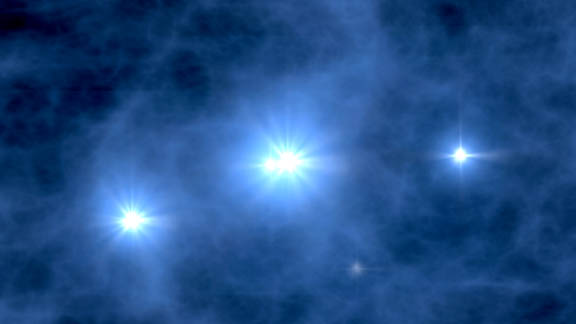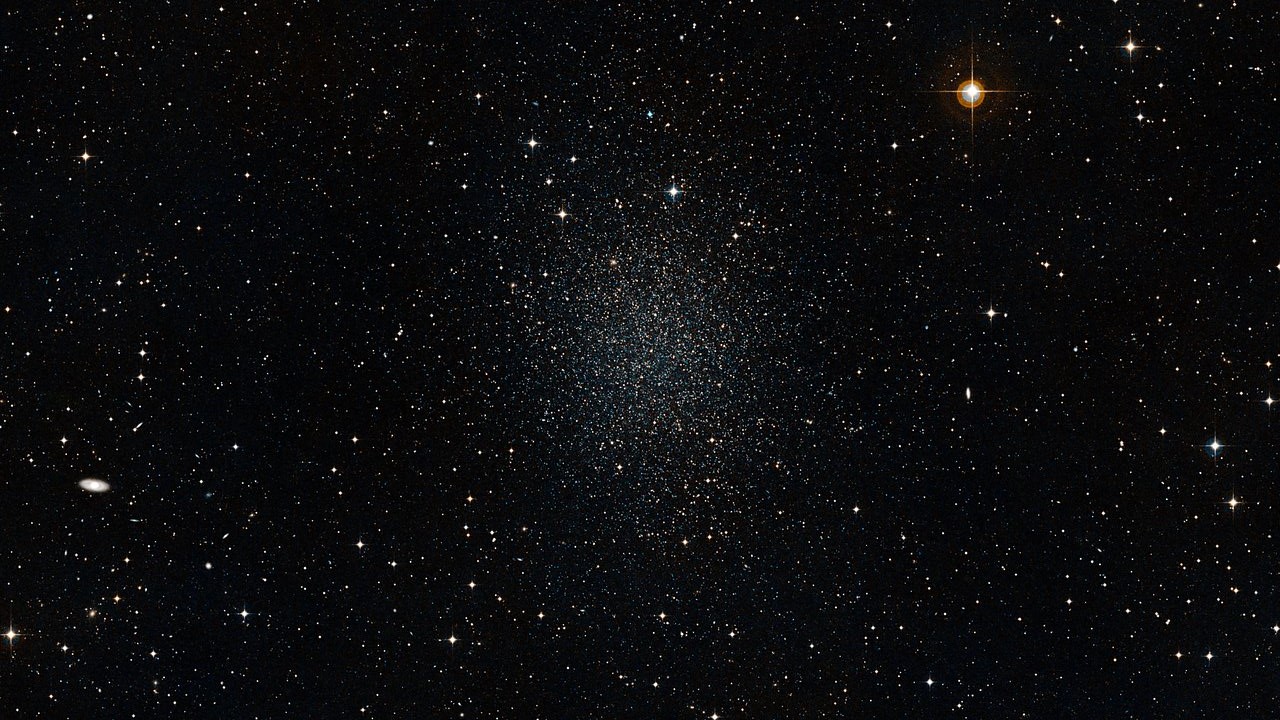Weird stellar remnant may be from one of the first stars in the universe
Astronomers have detected an extremely unusual star that they believe is a stellar fossil, or remnant, of one of the universe's very first stars.
The star, named AS0039, is located in the Sculptor dwarf galaxy around 290,000 light-years from the solar system. This stellar remnant has the lowest concentration of metal, particularly iron, of any star measured outside the Milky Way. The researchers think that finding is evidence that the remnant is a direct descendent of one of the universe's earliest stars, which contained very little metal.
The team found that the primordial parent star of AS0039 would have been around 20 solar masses and likely died in a hypernova — a stellar explosion 10 to 100 times more powerful than a regular supernova.
Related: Top 10 greatest explosions ever
The discovery may reveal new information about the universe's first stars, which have never been directly or indirectly observed until now. "AS0039 has such an unusual chemical composition that it enables us to probe the nature of the first stars and, in particular, their stellar mass," study co-author Mike Irwin, an astronomer at the University of Cambridge in England, told Live Science.
The very first stars
Though all stars are balls of hot gas called plasma, fueled by the fusion of elements in the core, they are also extremely diverse; they can range widely in size and color. But all stars can be classified into three distinct groups — Population I, Population II and Population III — based on their chemical composition, or metallicity.
Population I stars, like the sun and most other stars in the observable universe, have high metal content, especially iron, and are rich in relatively heavy elements, like calcium and magnesium. Population II stars, such as AS0039, are much rarer; these metal-poor stars contain only trace amounts of heavy elements. Population III stars, which have never been seen, are almost totally metal-free and have zero heavy elements.
Get the world’s most fascinating discoveries delivered straight to your inbox.
Although Population III stars have never been detected, astronomers know that the very first stars born in the universe would have been Population III stars, Irwin said.
During nuclear fusion, hydrogen atoms are fused together into helium, which releases an enormous amount of energy. Most stars — those up to around 1.4 solar masses — slowly use up their hydrogen fuel until there is none left, swell up to red giants and eventually collapse into white dwarfs.
However, larger stars quickly use up their hydrogen and instead start to fuse helium into carbon and, eventually, carbon into iron, which is the heaviest element a star can create. Eventually, these large stars become too dense and collapse in on themselves and explode in a supernova, which not only disperses the star's elements into the surrounding space but also releases enough energy to create elements heavier than iron.
New stars are often birthed in the clouds of gas left behind from previous stars, so when they form, they take in some of the metal and heavy elements from the exploded stars that came before them. As a result, all the stars observed today are Population I or II stars, because they formed from the leftovers of the stars that came before them.
However, the first stars in the universe, Population III stars, formed from pure hydrogen, which was the first element created after the Big Bang, Irwin said. "Population III stars are defined to be the first generation of stars to have formed in the universe and hence were formed from zero metallicity."
These primary stars also lacked heavy elements because no supernovas had created them.
Hypernova offspring
When researchers found AS0039, they were amazed at how metal-poor it was, even compared with other Population II stars.
AS0039 has the lowest metal concentration of any star studied outside our own galaxy, as well as the lowest carbon concentration of any star ever studied in the universe. It also has unusual ratios of heavier elements, particularly magnesium and calcium, in very low quantities. These findings suggest that AS0039 may be a second-generation star that formed out of the remains of a Population III star.
Computer simulations suggested the Population III star that birthed AS0039 likely died in a powerful hypernova explosion. "We believe that Population III stars were generally more massive than stars that we see today, so it would not be surprising if a Population III star ended up as a hypernova," Irwin said.
The researchers hope the discovery of AS0039 will help astronomers locate more second-generation metal-poor Population II stars, which would, in turn, shed light on the size and distribution of the Population III stars and the role they played in turning the early hydrogen-filled universe into the one we see today.
"AS0039 shows that it is possible to learn about the properties of Population III stars and signposts the way to finding more examples," Irwin said. "This is vital in helping us to understand how the universe evolved to what we observe today."
The study was published online July 13 in The Astrophysical Journal Letters.
Originally published on Live Science.

Harry is a U.K.-based senior staff writer at Live Science. He studied marine biology at the University of Exeter before training to become a journalist. He covers a wide range of topics including space exploration, planetary science, space weather, climate change, animal behavior and paleontology. His recent work on the solar maximum won "best space submission" at the 2024 Aerospace Media Awards and was shortlisted in the "top scoop" category at the NCTJ Awards for Excellence in 2023. He also writes Live Science's weekly Earth from space series.





